Imagine a world where your doctor can talk to you through your computer, where cool gadgets help you stay healthy, and machines can see inside your body to find out what’s wrong. That’s the amazing world of health technology, and it’s changing the way we stay healthy and fight sickness!
A long time ago, doctors kept your medical information in big paper files. They couldn’t talk to you through a computer or give you check-up gadgets. They had to rely on their eyes and hands to figure out what was wrong with them. It was tough and not always super accurate.
Today, things are way different. We have health gadgets like smartwatches that keep an eye on your heart rate and how many steps you take. There are machines that can take pictures inside your body to see if everything is okay. You can even talk to a doctor on your computer or phone through telemedicine! All of this helps doctors figure out problems faster and keeps you healthier.
But wait, there’s more to come! Health technology keeps getting better. Soon, we might have even cooler gadgets and robots to help doctors. They will be able to predict what might make you sick and help you stay healthy. This is like having a superhero on your side for your health!
So, health technology isn’t just machines and computers; it’s like a powerful friend that helps doctors take care of you better. It’s making healthcare more convenient and accurate, and it’s going to be even more amazing in the future. So, get ready for a world where staying healthy is super high-tech!
Benefits of Electronic Health Records (EHR): How EHR systems are streamlining healthcare processes and enhancing patient care

In the ever-evolving landscape of healthcare, the adoption of Electronic Health Records (EHR) has emerged as a pivotal technological advancement.
EHR systems are revolutionizing the way medical information is stored, accessed, and shared, with a profound impact on healthcare processes and, most importantly, patient care.
This article explores the myriad benefits of EHR systems, shedding light on how they are reshaping the healthcare industry.
Enhanced Accessibility and Portability
One of the most significant advantages of EHR systems is the ease of access to patient information. Unlike traditional paper records, which can be scattered across various locations and easily lost or damaged, EHRs consolidate data into digital formats.
This accessibility ensures that healthcare providers can retrieve a patient’s medical history and records instantly, regardless of their physical location. This portability is especially crucial in emergency situations when time is of the essence.
Improved Accuracy and Legibility
EHRs mitigate the risks associated with illegible handwritten notes, a common problem in paper-based records. Illegible or misinterpreted information can lead to medical errors.
With EHRs, the information is typed, reducing the chances of misinterpretation. This enhanced accuracy translates into safer and more effective patient care.
Efficient Data Management
EHRs are designed to streamline healthcare processes. They allow for easy data entry, updating, and sharing, reducing the administrative burden on healthcare professionals.
Tasks that once required hours of paperwork can now be accomplished with a few clicks. This increased efficiency frees up valuable time for healthcare providers to focus on patient care rather than administrative tasks.
Comprehensive Patient Histories
EHRs provide a comprehensive view of a patient’s medical history, including diagnoses, medications, allergies, test results, and treatment plans. This holistic perspective enables healthcare providers to make more informed decisions.
They can quickly identify potential drug interactions, allergies, or underlying health conditions, which can be critical in emergency situations or when treating complex, chronic illnesses.
Coordinated Care and Interoperability
EHRs support better coordination of care among healthcare providers. Different specialists and facilities can access a patient’s records, fostering collaboration and improving continuity of care.
Furthermore, EHR systems are designed with interoperability in mind, allowing different EHR systems to communicate and share patient data seamlessly. This facilitates a more connected and efficient healthcare ecosystem.
Patient Engagement
EHRs empower patients to take a more active role in their healthcare. Many EHR systems offer patient portals that enable individuals to access their health information, make appointments, request prescription refills, and communicate with their healthcare providers.
This increased engagement can lead to better adherence to treatment plans and a more proactive approach to health and wellness.
Data Analytics and Research
The wealth of data stored in EHRs offers significant potential for healthcare research and data analytics.
Researchers can anonymize and aggregate EHR data to gain insights into disease trends, treatment outcomes, and public health. This data-driven approach can lead to the development of more effective treatments and interventions.
Cost Savings
While the initial implementation of EHR systems can be a significant investment, in the long run, they can lead to cost savings. Reduced paperwork, fewer redundant tests, and more efficient workflows can all contribute to a decrease in healthcare costs.
Moreover, EHRs support the shift towards value-based care, where providers are reimbursed based on patient outcomes rather than services provided, encouraging cost-effective and high-quality care.
In conclusion, Electronic Health Records (EHR) systems are catalysts for positive change in the healthcare industry. They enhance accessibility, accuracy, and efficiency, ultimately improving patient care.
As the healthcare sector continues to embrace technology, EHRs stand as a shining example of how innovation can drive better health outcomes, increased patient satisfaction, and a more effective healthcare system.
Their benefits are far-reaching and reinforce the pivotal role of technology in the future of healthcare.
Telemedicine: Revolutionizing healthcare access through virtual consultations and remote monitoring
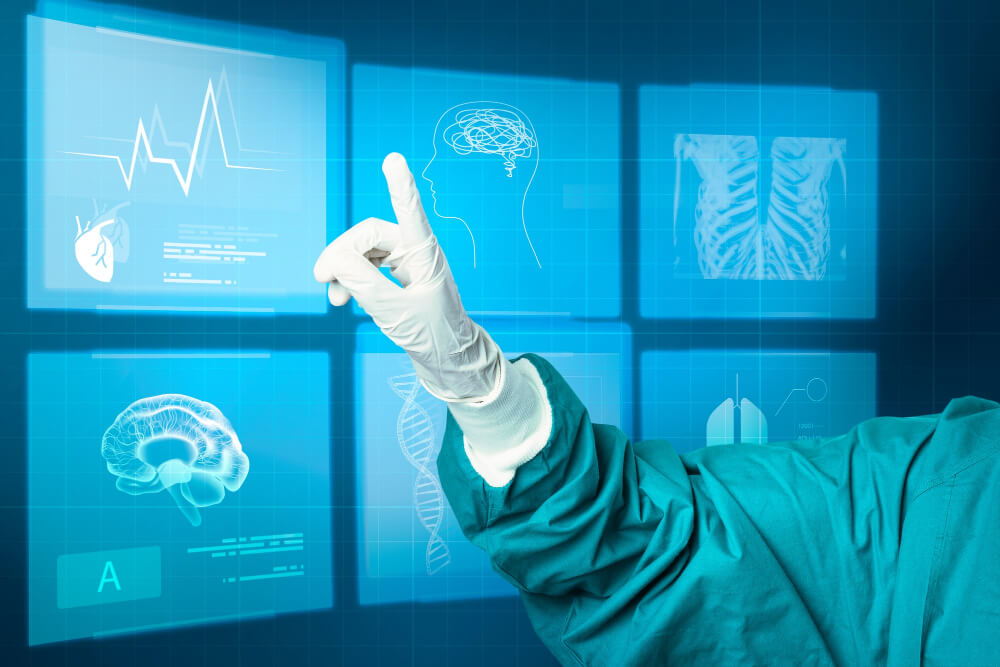
In a rapidly evolving world, technological advancements have not only transformed the way we live but also how we access and receive healthcare services.
Telemedicine, a marriage of telecommunications and medicine, has emerged as a revolutionary force, breaking down the barriers of time and distance to provide more accessible and efficient healthcare.
This article explores the profound impact of telemedicine on healthcare access, highlighting its role in virtual consultations and remote patient monitoring.
1. Expanding Healthcare Reach
Telemedicine is redefining healthcare access by extending its reach to remote and underserved regions. In areas where access to medical facilities is limited, telemedicine bridges the gap, ensuring that individuals in rural and distant communities can access medical expertise without the need for arduous travel.
This expansion of healthcare reach is particularly vital in emergencies and for patients with chronic conditions who require ongoing care.
2. On-Demand Consultations
One of the primary facets of telemedicine is its ability to provide on-demand virtual consultations. Through video calls and secure messaging platforms, patients can connect with healthcare providers in real time, regardless of geographical boundaries.
This instant access to medical advice is invaluable for addressing urgent health concerns, and providing a safety net for patients who might otherwise delay seeking care.
3. Continuity of Care
Telemedicine enhances the continuity of care. Patients can maintain regular contact with their healthcare providers, enabling the monitoring of chronic conditions, medication management, and rehabilitation programs.
This continuity can lead to better health outcomes, reduced hospital readmissions, and improved quality of life for patients managing long-term health issues.
4. Cost Savings
Telemedicine can significantly reduce healthcare costs for patients and providers alike. For patients, it eliminates the need for travel, which often incurs transportation and accommodation expenses.
Additionally, virtual consultations are usually more affordable than in-person visits. Healthcare providers can benefit from cost savings as well, as telemedicine reduces the administrative overhead associated with physical consultations.
5. Remote Monitoring and Wearable Technology
Telemedicine is not confined to virtual consultations alone; it also encompasses remote monitoring. Patients with chronic conditions can be equipped with wearable devices that continuously track vital signs and health data.
This data is then transmitted to healthcare providers, allowing for early intervention and personalized treatment plans. Remote monitoring is a proactive approach to healthcare that can prevent complications and reduce hospitalizations.
6. Improved Patient Engagement
Through telemedicine, patients become active participants in their healthcare. Virtual consultations and remote monitoring engage patients in managing their health, encouraging them to adhere to treatment plans, medication regimens, and lifestyle modifications.
This increased engagement can lead to better health outcomes and a higher quality of life.
7. Time Efficiency
Telemedicine offers a time-efficient solution for both patients and healthcare providers. Waiting times in crowded waiting rooms are eliminated, and appointments can be scheduled to suit patients’ and providers’ schedules.
This streamlined approach to healthcare delivery is a testament to the convenience and efficiency of telemedicine.
8. Healthcare Preparedness
The COVID-19 pandemic highlighted the importance of telemedicine in maintaining healthcare services during crises.
Telemedicine allows healthcare providers to adapt rapidly to unexpected challenges by providing remote care. It is a crucial component of healthcare preparedness and disaster response.
In conclusion, telemedicine stands as a transformative force in the healthcare industry, democratizing healthcare access and enhancing patient care.
Its ability to provide on-demand consultations, maintain continuity of care, and offer cost-effective solutions has made it an invaluable asset, especially in a world that is increasingly connected through technology.
As telemedicine continues to evolve and integrate with cutting-edge technologies, it promises to further revolutionize healthcare access, making quality medical care more accessible to people around the globe.
Wearable Health Devices: An overview of how fitness trackers and smartwatches are promoting personal health management
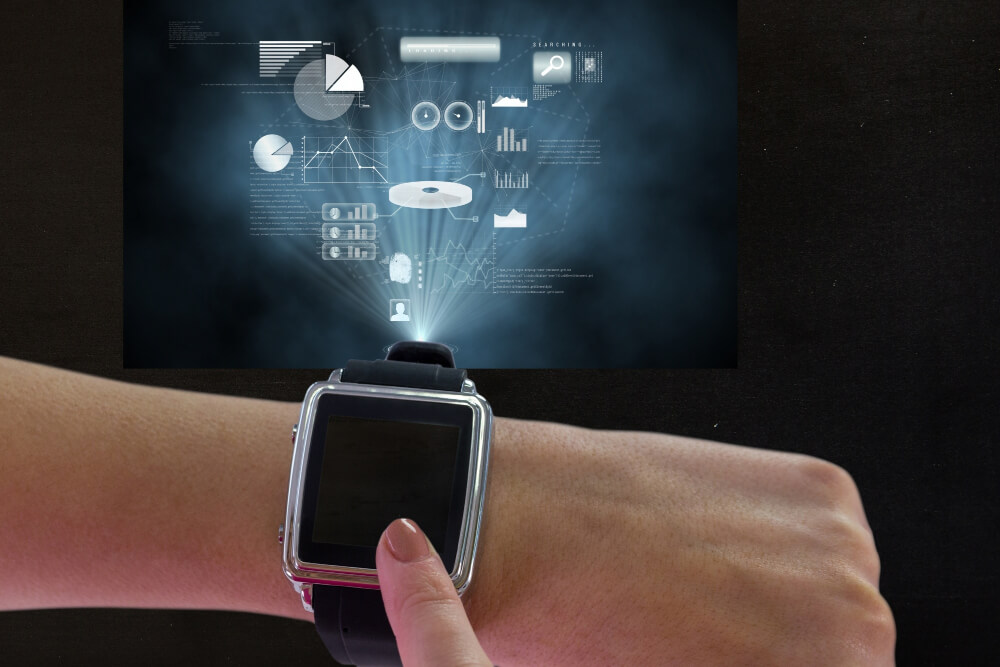
In our fast-paced, tech-driven world, the quest for healthier living has taken a fascinating turn with the advent of wearable health devices.
These compact, smart gadgets have become an integral part of modern life, transcending mere timekeeping and offering a myriad of functions designed to enhance our well-being. Fitness trackers and smartwatches, the prominent players in this evolving landscape, are at the forefront of this revolution, revolutionizing personal health management. This article provides an insightful overview of how these wearable health devices are reshaping our approach to health and fitness.
Fitness Tracking: The Core Functionality
At their essence, fitness trackers and smartwatches are built around the concept of fitness tracking. They monitor vital health data, such as steps taken, distance covered, and heart rate, providing real-time insights into our physical activities.
These devices not only quantify our movements but also offer a baseline for setting and achieving fitness goals. By presenting a clear picture of daily activity levels, they motivate users to make healthier choices and lead more active lives.
Health Monitoring Beyond Exercise
The capabilities of these devices extend well beyond tracking daily workouts. They incorporate advanced sensors and algorithms to monitor a range of health parameters, including sleep patterns, stress levels, and even oxygen saturation.
This holistic approach to health tracking enables users to gain a more comprehensive understanding of their well-being and identify areas that may require attention or improvement.
Personalized Health Insights
What sets wearable health devices apart is their ability to provide personalized health insights. They use the data collected to offer tailored recommendations and guidance.
For example, if you’re not getting enough sleep, your smartwatch may suggest adjusting your bedtime routine.
If your heart rate spikes during periods of inactivity, it might encourage you to take a break and move around. These personalized insights empower users to make informed decisions about their health.
Wellness Ecosystems
Many wearable health devices integrate with dedicated mobile apps, creating comprehensive wellness ecosystems. These apps serve as centralized hubs where users can analyze their health data, set goals, and track progress over time.
They can also sync with other health and fitness apps, offering a seamless way to manage overall wellness. These ecosystems encourage a more proactive and engaged approach to personal health management.
Health Alerts and Notifications
An additional feature that sets these devices apart is their ability to provide health alerts and notifications. They can alert users to irregular heartbeats, spikes in blood pressure, or fluctuations in blood oxygen levels.
Some models even have fall detection and emergency SOS capabilities, ensuring that help is never far away in the event of an emergency.
Integration with Telehealth
In an era of telemedicine and remote health monitoring, wearable health devices have taken on a crucial role. They can relay essential health data to healthcare professionals, supporting remote diagnostics and consultations.
This integration is especially valuable for those managing chronic conditions or seeking to maintain a close connection with their healthcare providers.
Style and Customization
In addition to their functionality, wearable health devices have made significant strides in terms of style and customization.
They are available in a variety of designs and finishes, catering to different tastes and preferences. Users can also personalize their device faces and bands, making them both practical and stylish accessories.
Continual Advancements
As technology continues to evolve, so do these health-focused wearables. Manufacturers are continually improving the accuracy of sensors, expanding the range of monitored health parameters, and enhancing the user experience.
With each generation, these devices become even more indispensable tools for personal health management.
In conclusion, wearable health devices have transcended their initial role as fitness trackers and smartwatches. They have become invaluable companions in our journey toward healthier living.
By providing a wealth of health data, personalized insights, and seamless integration with the digital health landscape, they empower individuals to take charge of their well-being like never before.
As technology advances, the future of wearable health devices promises even more remarkable innovations, further transforming how we manage our health and fitness.
Artificial Intelligence in Healthcare: The role of AI in diagnosis, treatment, and medical research
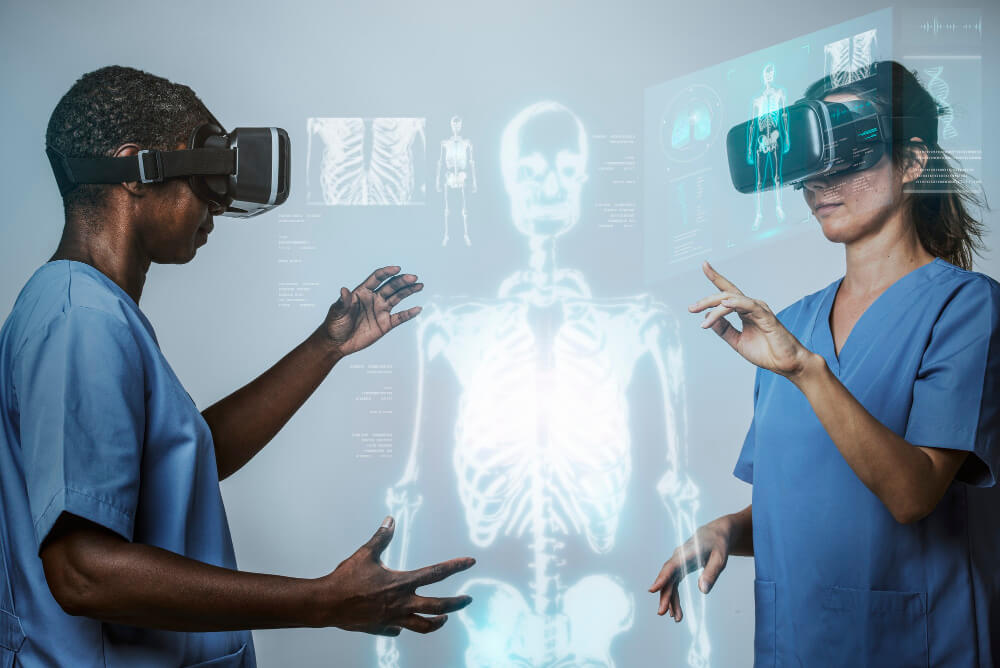
The marriage of artificial intelligence (AI) and healthcare represents one of the most promising and transformative developments in the medical field.
AI technologies are rapidly advancing and making significant inroads into healthcare, impacting every aspect of the industry. This article explores the multifaceted role of AI in healthcare, from diagnosis and treatment to cutting-edge medical research.
Diagnosis and Early Detection
AI has demonstrated exceptional proficiency in diagnosis and early disease detection. Machine learning algorithms can analyze vast datasets of medical records, images, and patient histories, spotting patterns and anomalies that might elude even the most experienced human healthcare providers.
This can lead to earlier and more accurate diagnoses, which are often crucial in managing and treating diseases effectively.
Medical Imaging
In radiology and medical imaging, AI has proven to be a game-changer. AI algorithms can quickly and accurately interpret medical images, such as X-rays, MRIs, and CT scans.
They help detect abnormalities, like tumors, fractures, or other anomalies, with remarkable precision. This not only accelerates diagnosis but also reduces the risk of human error.
Treatment Personalization
AI enables the tailoring of treatments to individual patients. By analyzing a patient’s genetic makeup, medical history, and other variables, AI can recommend personalized treatment plans.
This precision medicine approach ensures that treatments are not only more effective but also have fewer side effects, as they are optimized for each patient.
Drug Discovery and Development
AI is significantly accelerating the drug discovery process. By analyzing vast datasets related to molecular structures and the human genome, AI can identify potential drug candidates much faster than traditional methods.
This has the potential to bring life-saving medications to market more rapidly and at a lower cost.
Virtual Health Assistants
AI-driven virtual health assistants are becoming increasingly common. These virtual assistants can interact with patients, answer questions, provide information, and even offer basic medical advice.
They are available 24/7 and can significantly reduce the burden on healthcare providers, allowing them to focus on more complex patient interactions.
Predictive Analytics
AI excels in predictive analytics, helping healthcare organizations anticipate patient needs and plan resources more effectively.
By analyzing patient data, AI can forecast patient admissions, identify potential disease outbreaks, and optimize resource allocation. This results in more efficient healthcare delivery and cost savings.
Monitoring and Remote Care
AI-based monitoring solutions are changing the way patients are cared for. Wearable devices and sensors can continuously track a patient’s health and vital signs.
If any anomalies or concerning trends emerge, the AI system can alert healthcare providers, enabling timely interventions and reducing the need for frequent in-person visits.
Streamlining Administrative Tasks
AI can simplify administrative tasks, such as scheduling appointments, processing insurance claims, and managing medical records.
This not only reduces administrative overhead but also allows healthcare providers to spend more time with patients, improving the overall patient experience.
Ethical Considerations
While the benefits of AI in healthcare are substantial, they also raise important ethical and privacy considerations.
Data security and patient consent are crucial concerns when dealing with vast amounts of sensitive medical information. As AI becomes more integrated into healthcare, establishing robust ethical guidelines and data protection measures will be paramount.
Robotics in Surgery: Exploring the benefits of robotic-assisted surgeries and how it is transforming the field of medicine
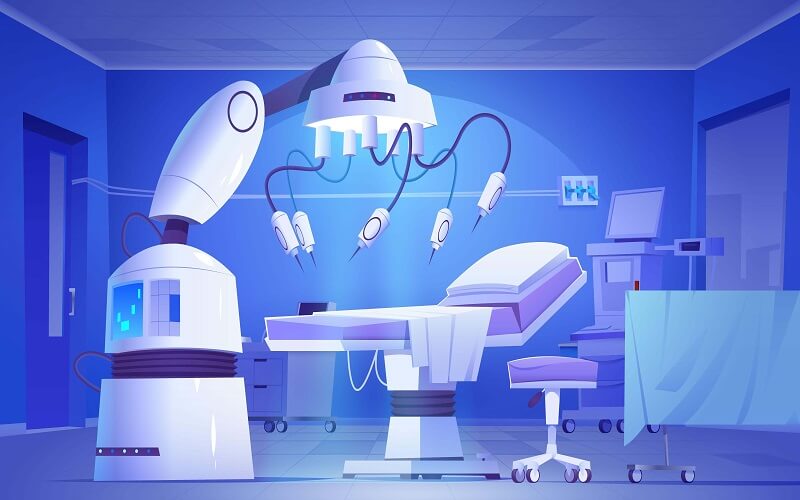
The world of medicine is continually advancing, and one of the most remarkable technological innovations reshaping the landscape is the integration of robotics into surgical procedures. Robotic-assisted surgeries have rapidly gained prominence in recent years, offering a wide array of benefits that are transforming the way we approach medical interventions. This article delves into the world of robotic surgery, highlighting its numerous advantages and its significant impact on the field of medicine.
Precision and Accuracy
One of the most significant advantages of robotic-assisted surgeries is their precision and accuracy. Surgical robots are equipped with highly advanced tools and cameras that provide a magnified, three-dimensional view of the surgical site. This level of detail allows surgeons to perform intricate procedures with enhanced precision, reducing the risk of human error and improving patient outcomes.
Minimally Invasive Surgery
Robotic systems are particularly well-suited for minimally invasive surgery, where small incisions are made instead of one large opening. The robotic arms can access these tiny incisions with greater flexibility and range of motion than the human hand, making complex procedures more manageable. Minimally invasive surgeries often result in shorter recovery times, less pain, and reduced scarring.
Reduced Blood Loss and Complications
Due to their precision, robotic-assisted surgeries often involve reduced blood loss and a lower risk of complications. This is especially beneficial for delicate procedures or for patients with underlying health conditions that make traditional surgery riskier.
Faster Recovery Times
Faster recovery times are a significant advantage of robotic surgery. Minimally invasive procedures, which are often performed using robotic assistance, typically lead to shorter hospital stays and quicker recuperation, allowing patients to return to their normal lives sooner.
Improved Dexterity
The robotic arms of surgical systems can mimic the movements of a surgeon’s hands with even greater dexterity. This means that surgeons can perform complex tasks with more control, stability, and range of motion. In some cases, this enhanced dexterity enables procedures that were once considered too challenging to be safely accomplished.
Telesurgery and Remote Consultations
The concept of telesurgery, or remote surgery, is an exciting development in the realm of robotic-assisted surgeries. Surgeons can now perform operations from a remote location with the help of robotic systems.
This technology has the potential to extend medical expertise to underserved areas, disaster-stricken regions, or during situations where immediate access to surgical specialists is needed.
Enhanced Training and Skill Development
Robotic-assisted surgeries have not only improved patient care but also have enhanced the training process for new surgeons. Surgical robots can simulate real-world surgical scenarios, allowing surgeons to practice and refine their skills before performing procedures on actual patients.
This not only improves the competence of new surgeons but also fosters innovation in the field.
Expanding the Scope of Surgery
The precision and adaptability of robotic-assisted surgeries have expanded the scope of what is possible in medicine. It has opened doors to new, less invasive treatments for a variety of conditions, from cardiac surgery to joint replacement, making surgery an option for patients who were previously considered unfit for traditional procedures.
In conclusion, robotic-assisted surgeries have ushered in a new era in the medical world, where precision, minimally invasive procedures, and reduced recovery times are becoming the norm. The continuous development of robotic technology promises even greater benefits in the future, which will undoubtedly change the way we perceive and approach surgery.
With the potential for telesurgery and enhanced training for surgeons, robotics in surgery is not just transforming patient care but also the very practice and science of medicine itself.
Big Data and Predictive Analytics in Healthcare: Harnessing large volumes of medical data to improve patient outcomes and healthcare management in health technology
In the era of information, data is the lifeblood of modern healthcare. The healthcare industry generates an immense amount of data daily, encompassing patient records, test results, treatment plans, and a host of other critical information.
The power of this data, when harnessed through big data and predictive analytics, is transforming healthcare as we know it. This article explores the impact of big data and predictive analytics on patient outcomes and healthcare management.
Enhanced Patient Care
One of the most significant contributions of big data and predictive analytics in healthcare is its ability to enhance patient care. By aggregating and analyzing large volumes of medical data, healthcare providers can make more informed decisions about patient diagnoses and treatment plans.
Predictive analytics can identify potential health issues early, allowing for timely intervention and personalized care.
Disease Prevention and Early Detection
Big data and predictive analytics play a crucial role in disease prevention and early detection. By examining vast datasets, these technologies can identify patterns and trends that may lead to disease outbreaks.
This proactive approach allows healthcare systems to take preventive measures, such as vaccination campaigns or public health initiatives, reducing the impact of diseases on communities.
Personalized Medicine
The concept of personalized medicine is a reality thanks to big data and predictive analytics. These technologies can analyze an individual’s genetic makeup, medical history, and lifestyle factors to create customized treatment plans.
This approach is more effective and reduces the risk of adverse reactions to treatments, as they are tailored to each patient’s unique needs.
Streamlined Healthcare Management
Healthcare management has become more efficient with the help of big data and predictive analytics. Hospital administrators and policymakers can analyze data to optimize resource allocation, reduce costs, and enhance the quality of care.
Predictive models can forecast patient admission rates, helping healthcare facilities prepare for surges in demand.
Real-time Monitoring and Alerts
Real-time monitoring is a critical feature of big data and predictive analytics in healthcare. Wearable devices and remote monitoring systems can continuously collect data on a patient’s vital signs and transmit it to healthcare providers.
If unusual trends or anomalies are detected, healthcare professionals can receive alerts and take immediate action.
Research Advancements
Big data has significantly impacted medical research. Researchers can access extensive datasets for studies, clinical trials, and drug development.
This wealth of information expedites research processes, leading to faster breakthroughs and the development of more effective treatments.
Data-Driven Decision-Making
Data-driven decision-making has become a fundamental practice in healthcare. Healthcare providers and administrators rely on data analysis to make informed choices about treatment plans, resource allocation, and the optimization of healthcare operations.
Improved Patient Engagement
Big data and predictive analytics also enhance patient engagement. Patients can access their health data, test results, and treatment plans through patient portals, fostering a sense of ownership over their health.
Additionally, predictive analytics can recommend lifestyle modifications and interventions, encouraging patients to take a proactive role in their well-being.
In conclusion, big data and predictive analytics are at the forefront of a healthcare revolution. By harnessing the power of vast medical datasets, the industry is moving from reactive to proactive care, improving patient outcomes, and enhancing healthcare management.
The continuous development and integration of these technologies promise even more profound changes in the future, creating a healthcare system that is more effective, efficient, and patient-centered than ever before.
Virtual Reality (VR) in Rehabilitation: The application of VR technology in assisting patient recovery and therapy.
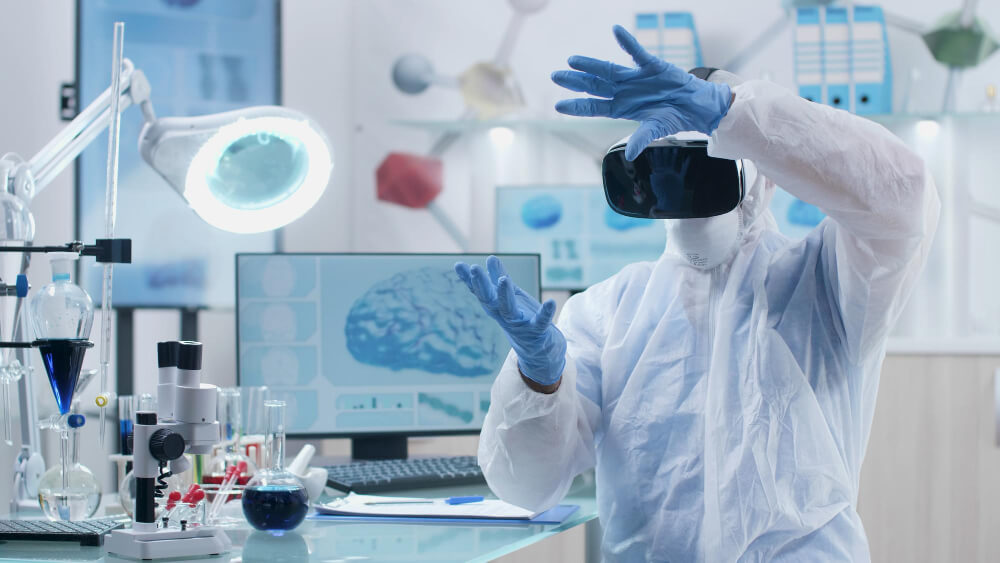
The integration of virtual reality (VR) technology into the realm of healthcare has ushered in a new era of rehabilitation and therapy. The versatile and immersive nature of VR is transforming the patient recovery process in remarkable ways.
In this article, we explore the growing role of VR technology in healthcare, specifically its application in assisting patient recovery and therapy.
1. Engaging and Immersive Therapy
VR therapy offers a unique and immersive experience that can engage patients in their rehabilitation like never before. Through the use of VR headsets, patients can enter interactive and visually stimulating environments, making the therapy experience more engaging and enjoyable.
This engagement can enhance motivation, leading to better adherence to therapy regimens and ultimately improving recovery outcomes.
2. Pain Management
VR technology can serve as a powerful tool in managing pain, a critical aspect of patient recovery. By immersing patients in soothing and distracting virtual environments, VR can reduce the perception of pain. Patients experiencing chronic pain or recovering from surgeries often find relief and improved comfort through VR interventions.
3. Neurological Rehabilitation
VR is particularly valuable in neurological rehabilitation. Patients recovering from strokes, traumatic brain injuries, or neurodegenerative conditions can benefit from VR-based exercises that target specific motor skills and cognitive functions.
These exercises can be adjusted to the patient’s needs, providing a tailored approach to rehabilitation.
4. Physical Rehabilitation
In physical therapy, VR can be used to facilitate exercises and movements that aid in the recovery of musculoskeletal injuries. Patients can engage in virtual activities that mimic real-life movements, making physical rehabilitation more enjoyable and effective.
The immersive nature of VR can also help patients regain strength, flexibility, and coordination.
5. Cognitive Rehabilitation
For patients with cognitive impairments resulting from injuries or conditions such as Alzheimer’s disease, VR technology offers cognitive rehabilitation programs that can improve memory, problem-solving skills, and mental agility.
These VR exercises challenge patients in a fun and engaging manner, stimulating cognitive function.
6. Gait Training and Balance Improvement
VR can be a valuable tool for gait training and balance improvement. Patients with mobility issues or those recovering from injuries can practice walking and balance exercises in a safe virtual environment.
These exercises can be tailored to challenge patients at their own pace, facilitating improved gait and balance over time.
7. Overcoming Phobias and PTSD
Beyond physical rehabilitation, VR has proven effective in treating psychological conditions. Patients with phobias or post-traumatic stress disorder (PTSD) can undergo exposure therapy in a controlled and immersive virtual environment.
This approach allows patients to confront and manage their fears in a safe and monitored setting.
8. Progress Tracking and Data Collection
VR rehabilitation platforms often include built-in data tracking capabilities. Therapists can monitor patients’ progress and make adjustments to their therapy plans as needed.
This real-time data collection enhances the quality of care and enables therapists to fine-tune the rehabilitation process.
In conclusion, the integration of VR technology into healthcare has revolutionized the patient recovery and therapy landscape. VR therapy is engaging, immersive, and highly versatile, offering numerous benefits across a wide range of medical conditions. As VR technology continues to advance, it holds the promise of becoming an even more integral part of rehabilitation and therapy, ultimately improving patient outcomes and the quality of care provided in the healthcare industry.
Health Apps and Digital Platforms: How mobile apps and online platforms are empowering individuals to take control of their health

The digital age has ushered in a remarkable transformation in the way we manage our health. With the rise of health apps and digital platforms, individuals now have the tools to take greater control over their well-being.
These mobile applications and online platforms are empowering users to make informed decisions, track their health, and access a wealth of medical resources at their fingertips.
In this article, we explore how health apps and digital platforms are revolutionizing healthcare and putting the power of wellness back into the hands of individuals.
1.Access to Health Information
One of the most significant advantages of health apps and digital platforms is the vast repository of health information they provide. Users can access reputable sources, research medical conditions, and gain insights into symptoms and treatments.
This readily available information encourages individuals to become better-informed advocates for their own health.
2.Health Tracking and Monitoring
Mobile apps and digital platforms offer an array of tools for health tracking and monitoring. Users can monitor their daily activity, track their diet, and measure vital signs such as heart rate and blood pressure.
These features allow individuals to take a proactive approach to their health, set and achieve fitness goals, and manage chronic conditions more effectively.
3.Medication Management
Health apps simplify medication management, reminding users when to take their medications and providing information about dosages and potential side effects.
These reminders are especially valuable for individuals managing complex medication regimens, such as those with chronic illnesses.
4.Telehealth and Virtual Consultations
Telehealth services have become increasingly popular through digital platforms, providing access to healthcare professionals through virtual consultations. Users can seek medical advice, obtain prescriptions, and receive expert guidance from the comfort of their homes.
This convenience not only saves time but also increases access to healthcare, particularly for those in remote areas.
5.Mental Health Support
Mental health apps are a crucial component of digital health platforms. They offer various features, from mood tracking to guided meditation and therapy.
These resources enable users to manage stress, anxiety, and depression, offering valuable support for mental well-being.
6.Personalized Wellness Plans
Health apps and digital platforms often offer personalized wellness plans based on user input and health data.
These plans include fitness routines, dietary recommendations, and lifestyle modifications that cater to an individual’s specific health goals and needs.
7.Community and Support
Many health apps foster a sense of community and support through forums, chat features, and social networks. Users can connect with others facing similar health challenges, share experiences, and access a network of emotional support.
8.Chronic Disease Management
For individuals with chronic diseases such as diabetes, asthma, or hypertension, digital platforms provide a means of tracking symptoms, medications, and treatment plans.
These platforms can alert users to potential issues, helping them manage their conditions more effectively and reducing the risk of complications.
In conclusion, the emergence of health apps and digital platforms is fundamentally changing the healthcare landscape. These tools empower individuals to actively participate in their health management, offering access to information, monitoring capabilities, and convenient healthcare services.
As digital health technology continues to evolve, it holds the promise of enhancing the quality of care, improving health outcomes, and promoting a more proactive and engaged approach to well-being. In a world increasingly driven by data and connectivity, the power to take control of one’s health is now in the palm of your hand.
Security and Privacy Concerns in Health Technology: Addressing the challenges associated with data protection and patient confidentiality in a digital healthcare landscape
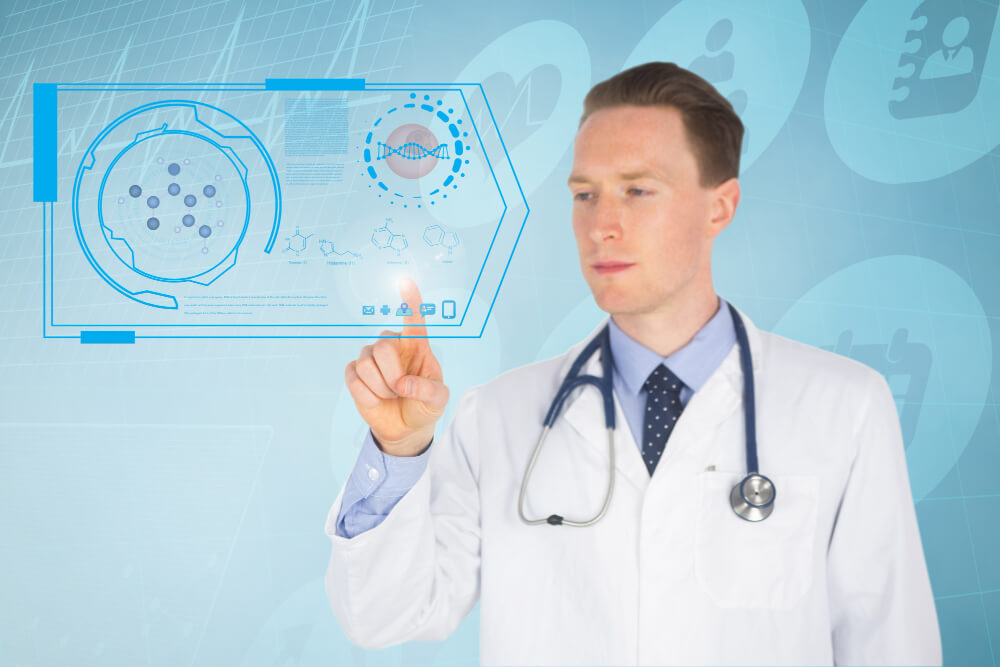
The integration of technology in healthcare has brought about numerous benefits, from streamlined patient care to more efficient administrative processes. However, the rapid digitization of health data has also raised significant concerns about security and patient privacy.
In this article, we explore the challenges associated with data protection and patient confidentiality in the digital healthcare landscape and discuss how these concerns are being addressed.
1.Data Breaches and Cybersecurity Threats
Healthcare data is a prime target for cybercriminals. Medical records often contain a treasure trove of sensitive information, including personal identifiers, medical history, and payment details.
The healthcare industry has witnessed a surge in data breaches, highlighting the vulnerability of digital health records. These breaches can result in identity theft, fraud, and compromised patient privacy.
To address this, healthcare organizations are investing in robust cybersecurity measures, including encryption, firewalls, and intrusion detection systems. Regular employee training and strict access controls are also being implemented to reduce the risk of data breaches.
2.Interoperability Challenges
The sharing of health data across different platforms and systems, known as interoperability, is essential for delivering high-quality care. However, the transfer of patient data between healthcare providers and systems can pose security risks. While patients benefit from better-coordinated care, it can create opportunities for data leaks.
To address this concern, organizations are developing standardized protocols for data exchange and implementing secure application programming interfaces (APIs) to ensure that data is transmitted safely and in compliance with privacy regulations.
3.Regulatory Compliance
Healthcare is a highly regulated industry, with laws such as the Health Insurance Portability and Accountability Act (HIPAA) and the General Data Protection Regulation (GDPR) governing the protection of patient data. Compliance with these regulations is essential to ensure patient privacy.
Healthcare organizations are addressing this concern by implementing stringent policies, conducting regular audits, and offering staff training to ensure that patient data is handled in compliance with regulatory standards. Non-compliance can lead to hefty fines and damage to an institution’s reputation.
4.Patient Trust
Building and maintaining trust in the digital healthcare landscape is paramount. Patients must feel confident that their data is safe and that their privacy is respected. Privacy breaches or unauthorized access to medical records can erode trust and deter patients from seeking healthcare services.
To address this, healthcare providers are enhancing their transparency regarding data usage, allowing patients to access and manage their own records, and seeking explicit consent for data sharing. By doing so, they foster trust and strengthen the patient-provider relationship.
5.Insider Threats
While much attention is focused on external threats, insider threats from healthcare employees can also pose significant risks to data security. Employees may intentionally or inadvertently expose sensitive patient information.
To mitigate this, healthcare organizations are employing strategies such as employee training, strict access controls, and user behavior analytics to detect and prevent unauthorized access.
6.Encryption and Data Anonymization
The use of encryption and data anonymization techniques is becoming more widespread to protect patient data. These methods ensure that even if a data breach occurs, the stolen information remains unreadable and unusable. This is a critical component of safeguarding patient privacy.
In conclusion, the concerns surrounding security and privacy in health technology are challenges that the healthcare industry must continually address to ensure the trust and safety of patients. As the digital healthcare landscape evolves, so too must the measures taken to protect patient data and uphold privacy standards.
By implementing robust cybersecurity measures, ensuring compliance with regulations, and promoting transparency and trust, healthcare organizations can navigate the complexities of data protection while reaping the benefits of technology in improving patient care.
The evolution of healthcare through the integration of health technology has undoubtedly been a transformative journey. From the early days of paper medical records to the current era of artificial intelligence, telemedicine, and wearable health devices, innovation has reshaped every facet of the healthcare industry.
The impact is profound and far-reaching, improving patient care, enhancing diagnostic accuracy, streamlining administrative tasks, and empowering individuals to take charge of their health. Health technology has unlocked new possibilities in diagnosis, treatment, and research, promising a future where healthcare is more personalized, accessible, and efficient than ever before.
As healthcare technology continues to advance, its potential is boundless. We can anticipate further breakthroughs in remote patient monitoring, predictive analytics, and telehealth. It’s a journey where the collaboration between human expertise and cutting-edge technology will redefine the boundaries of what is possible in the healthcare field.
However, with these exciting advancements come responsibilities. Healthcare providers, policymakers, and tech developers must remain committed to addressing security and privacy concerns, ensuring that data protection and patient confidentiality are upheld. Ethical considerations and regulatory compliance must guide the continued evolution of health technology.
The evolution of healthcare is an ongoing process, one that promises to bring even greater progress and innovation in the years to come. In this dynamic landscape, the central focus remains on delivering better, more accessible healthcare and improving the overall well-being of individuals and communities. It is a journey that holds the promise of a healthier, more connected, and compassionate world of healthcare.
